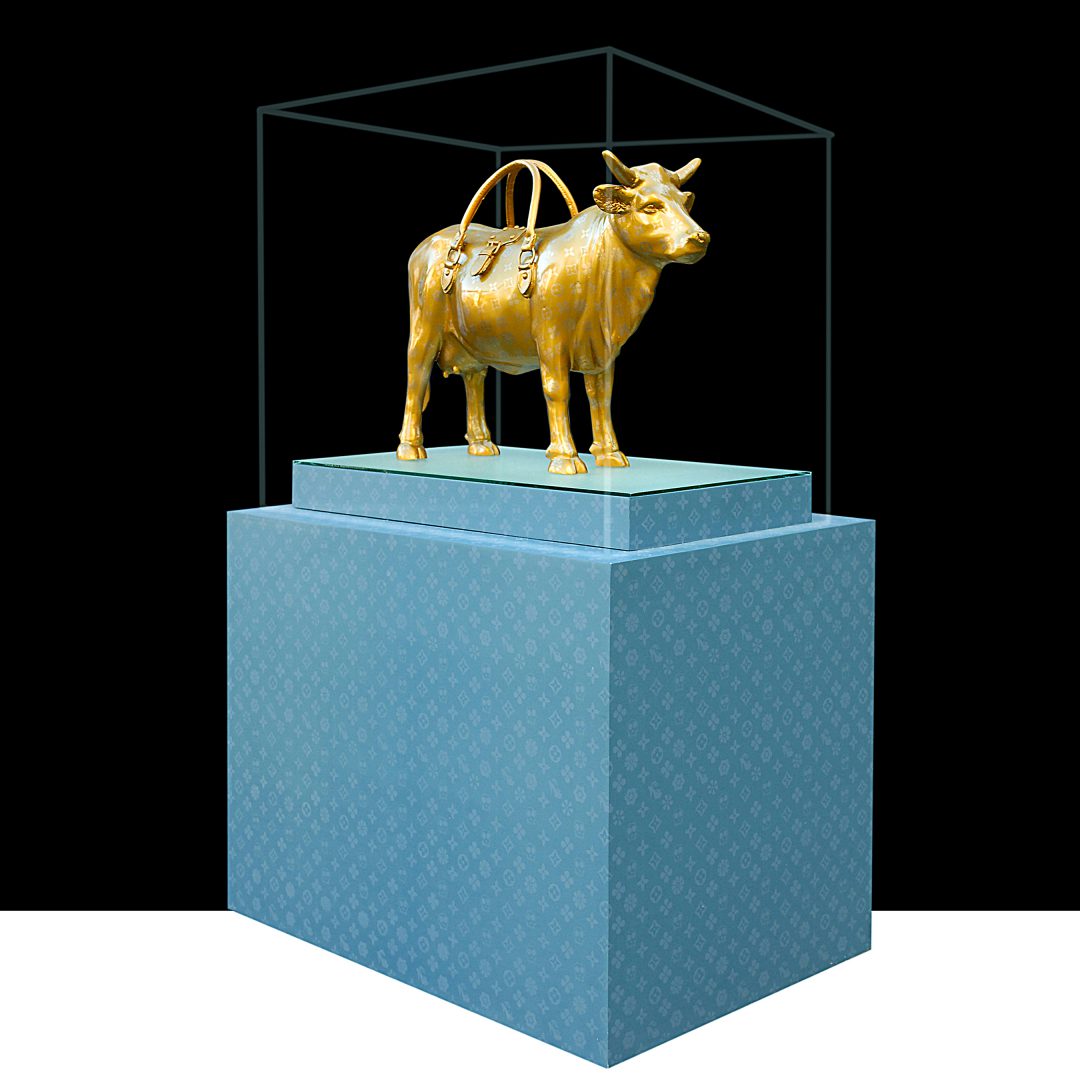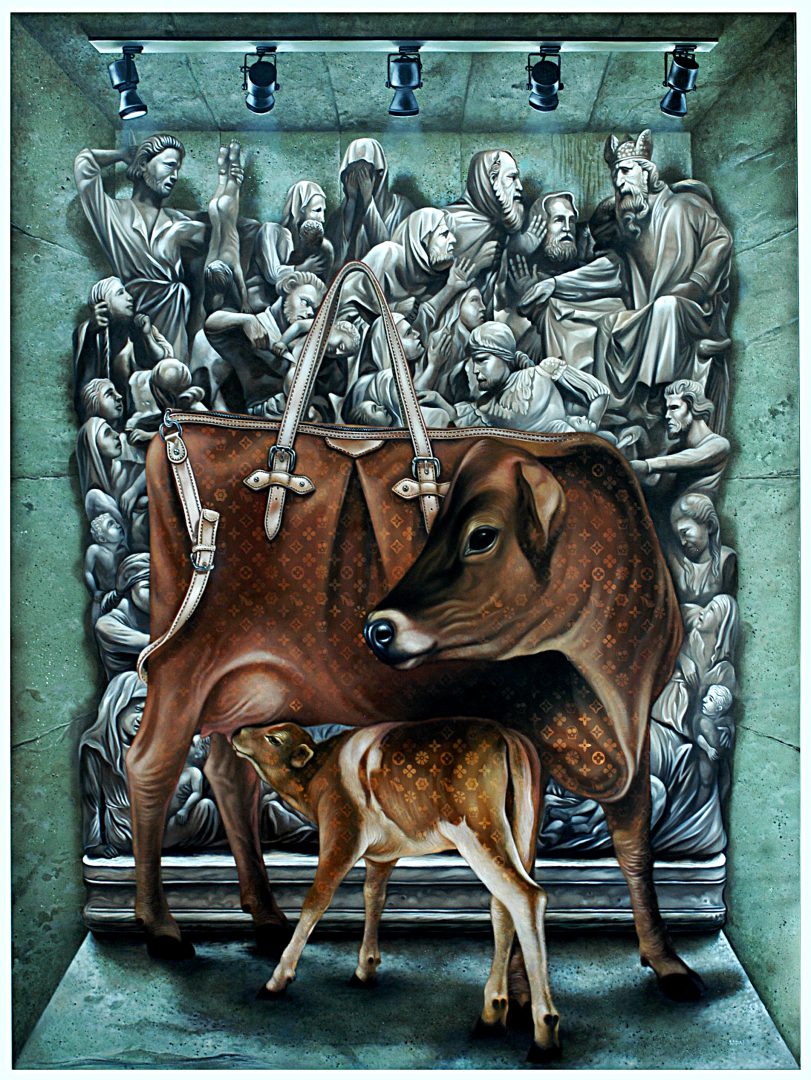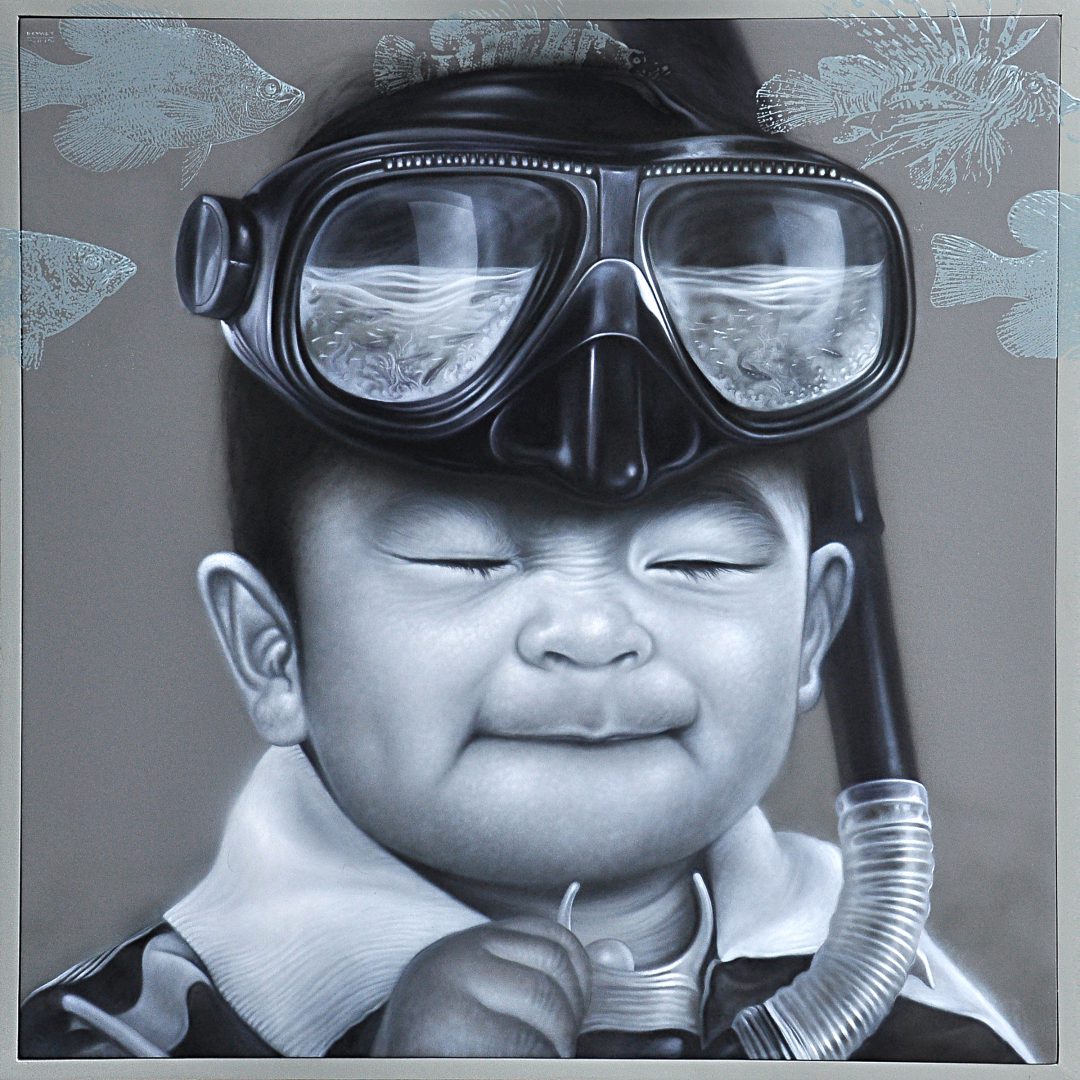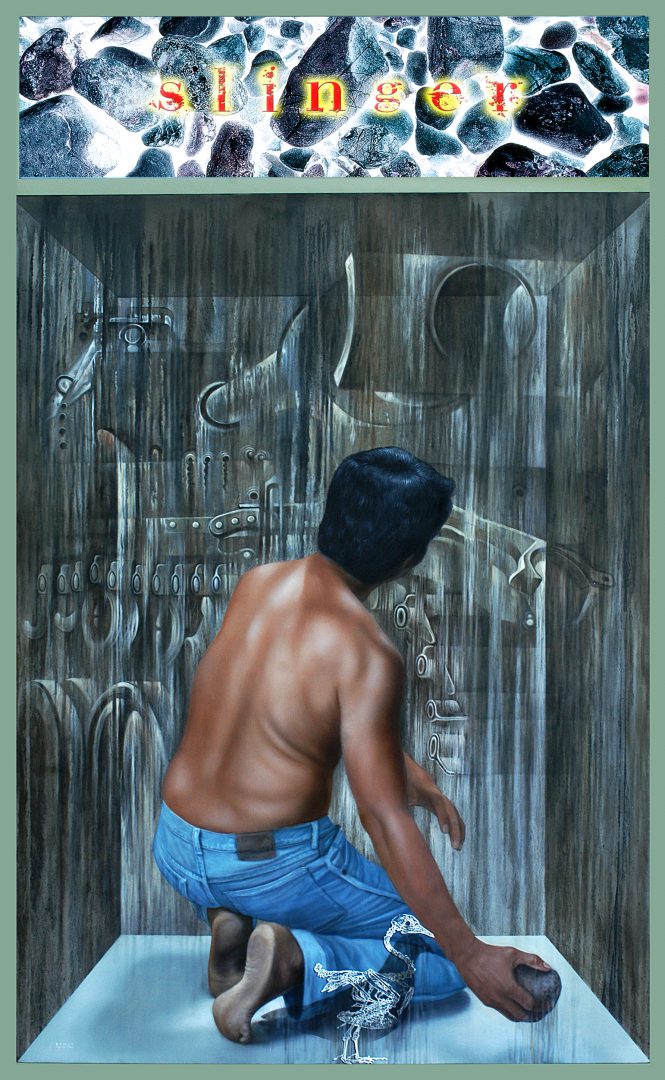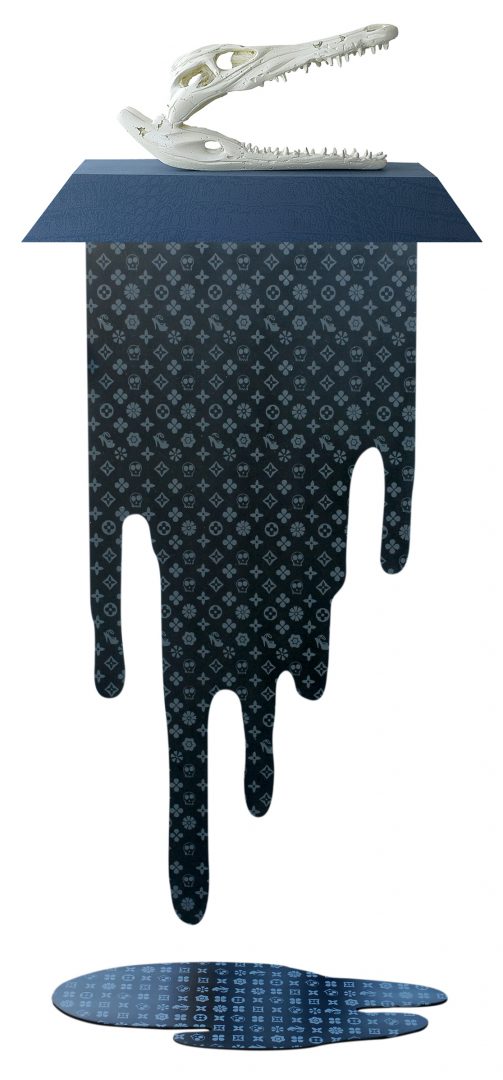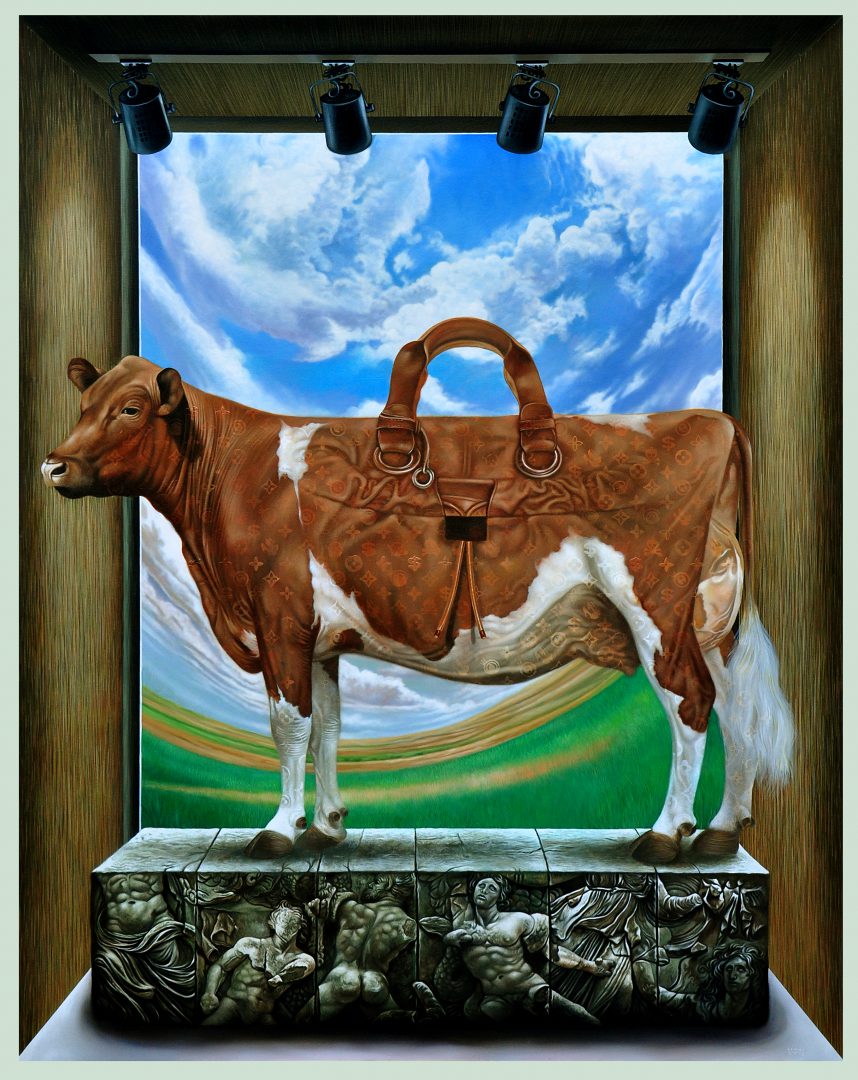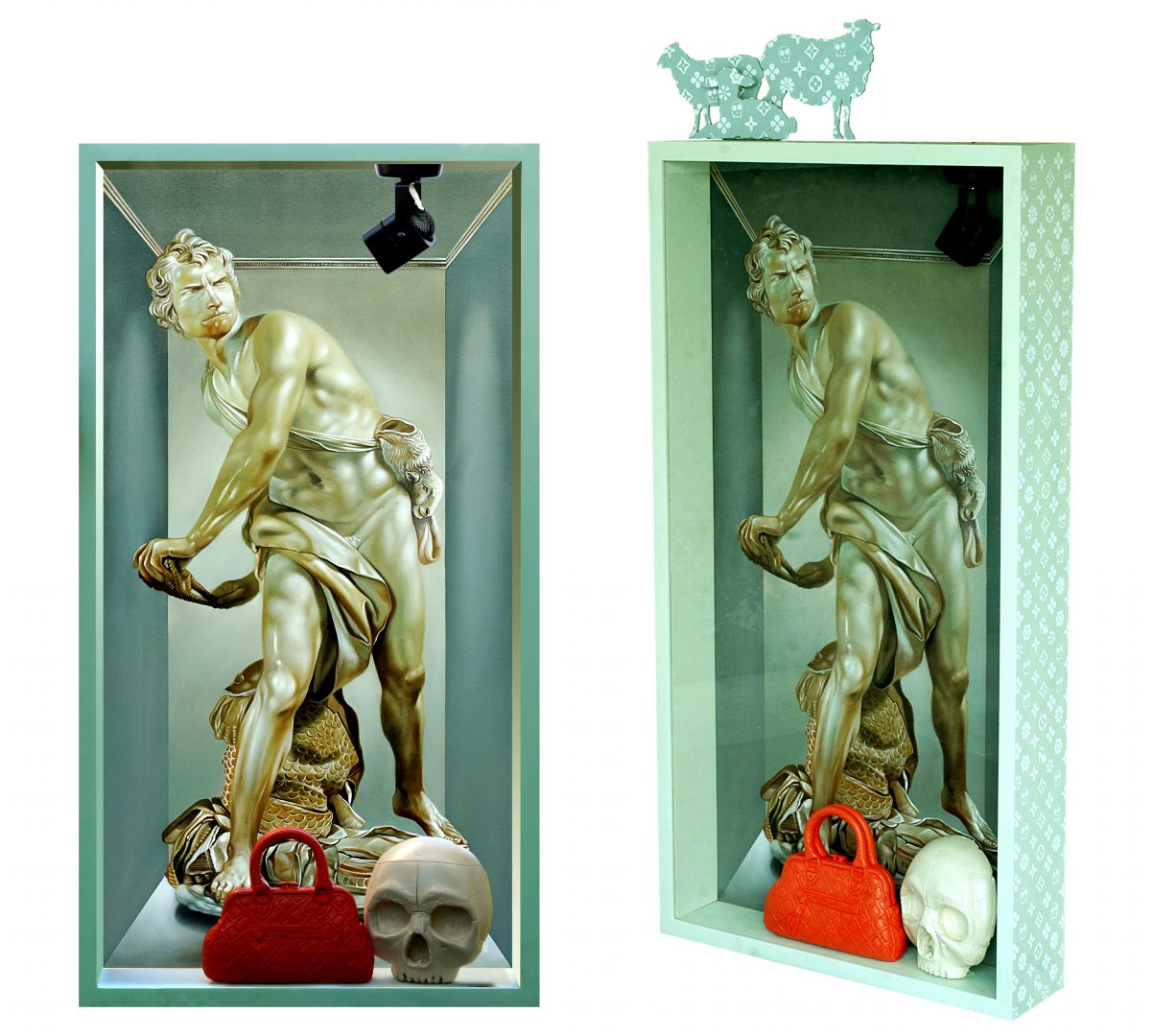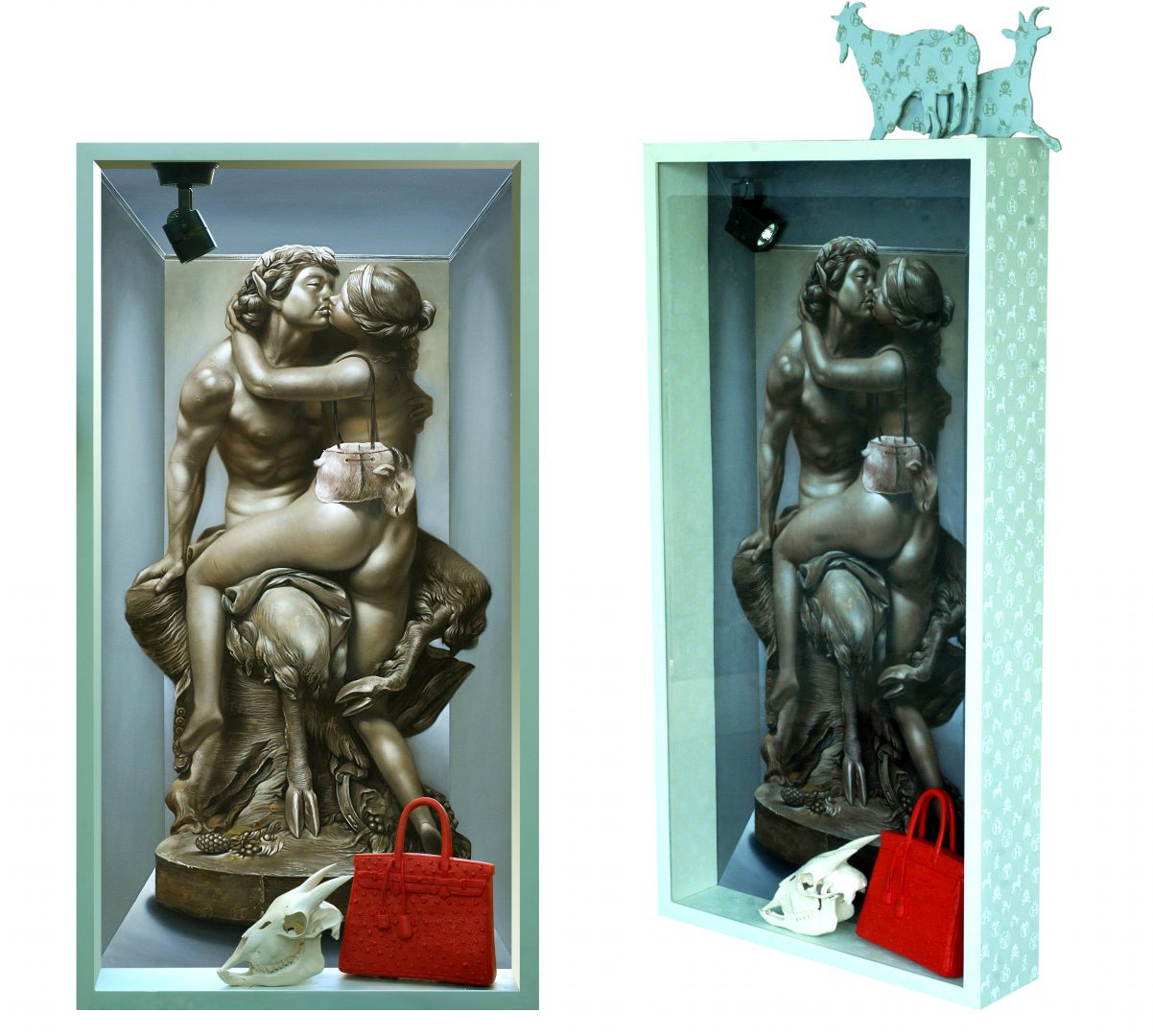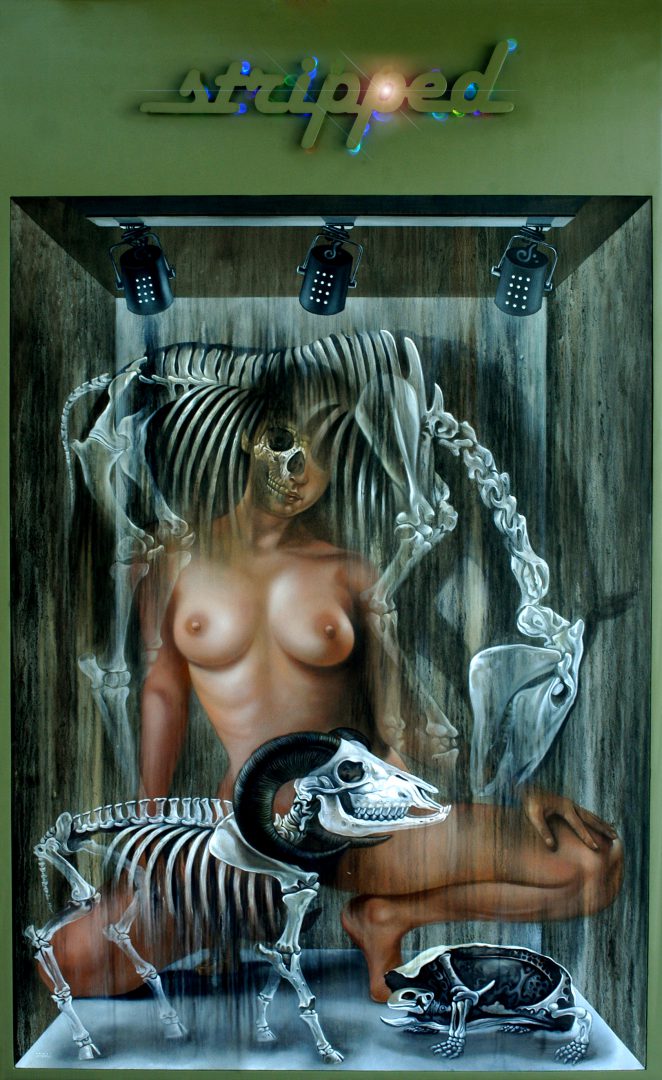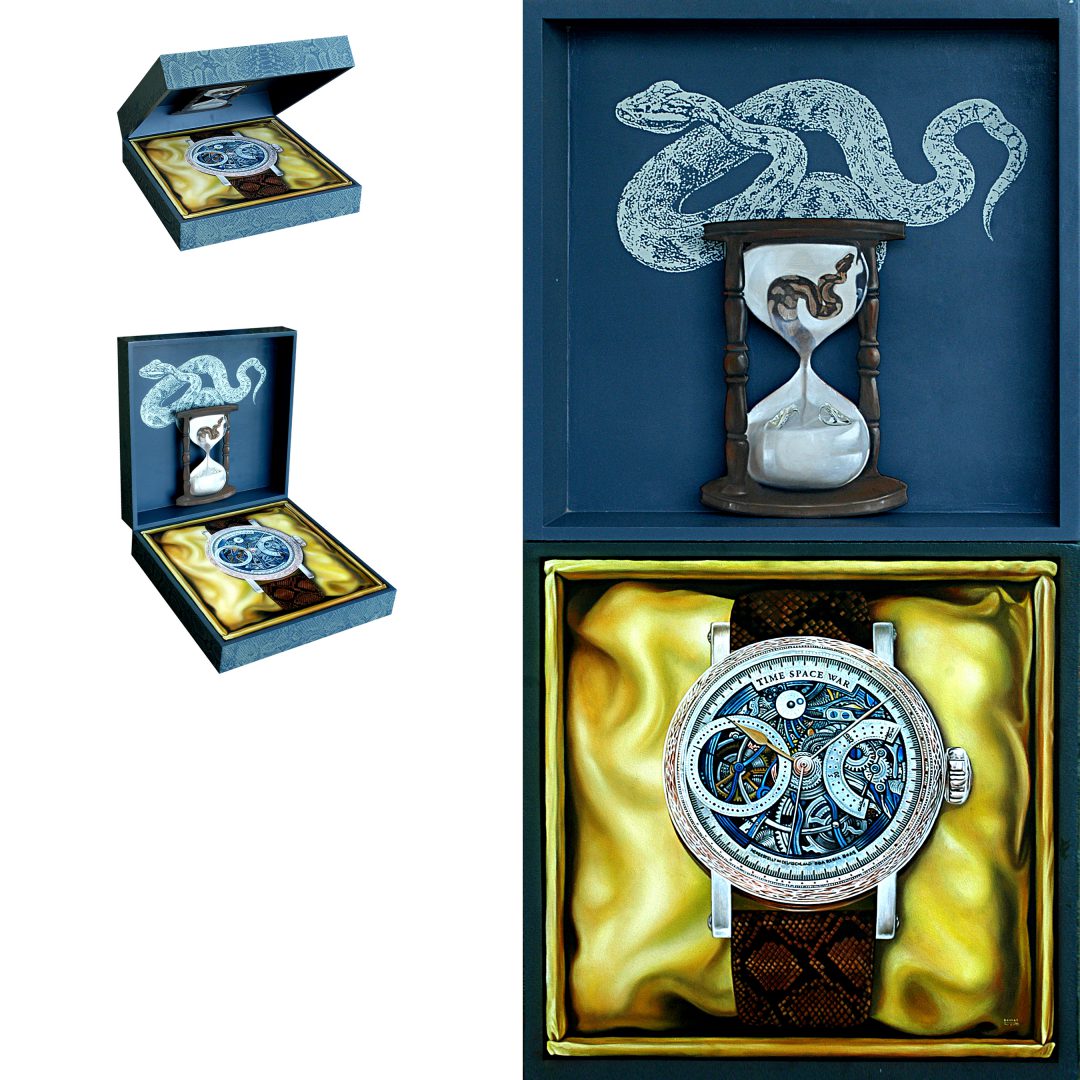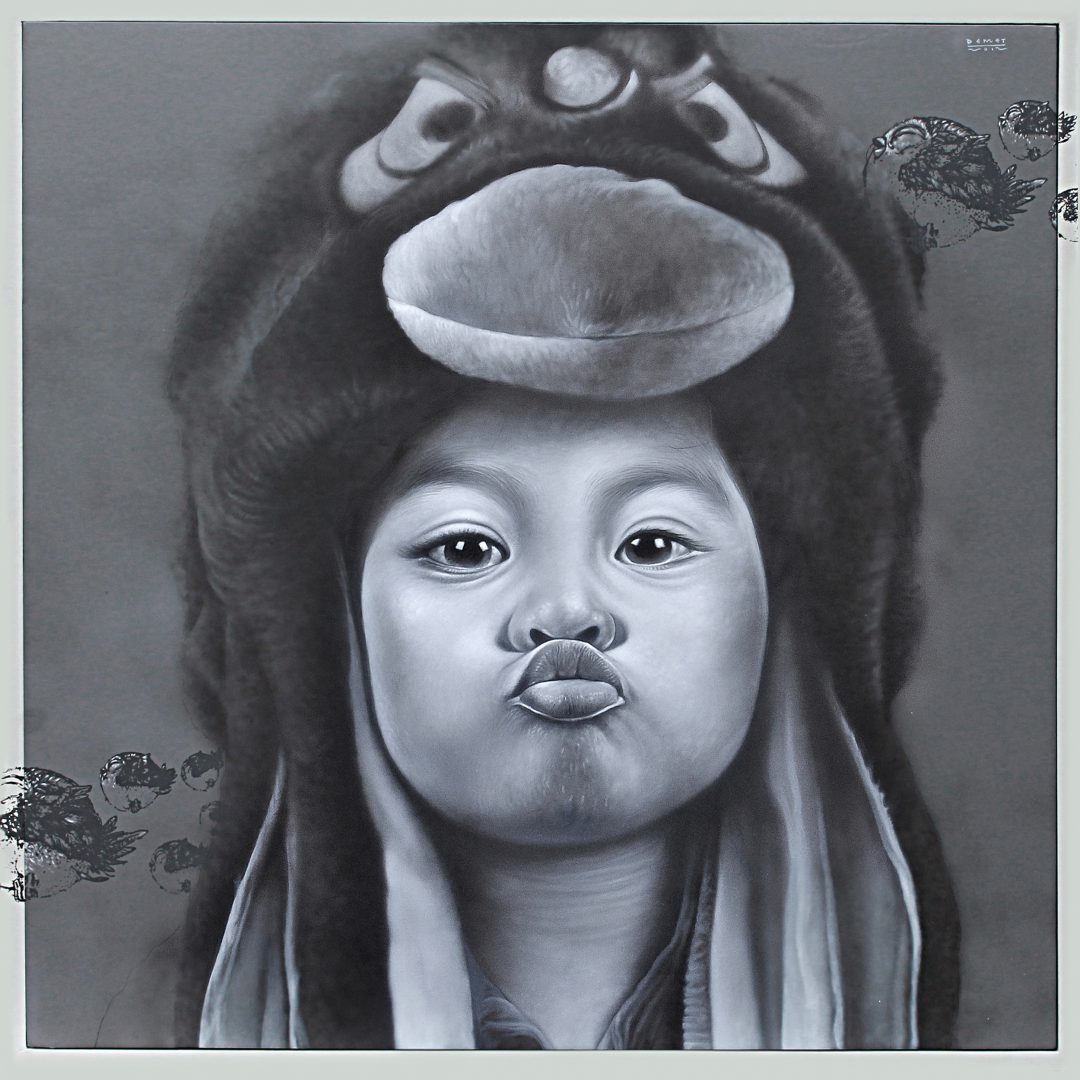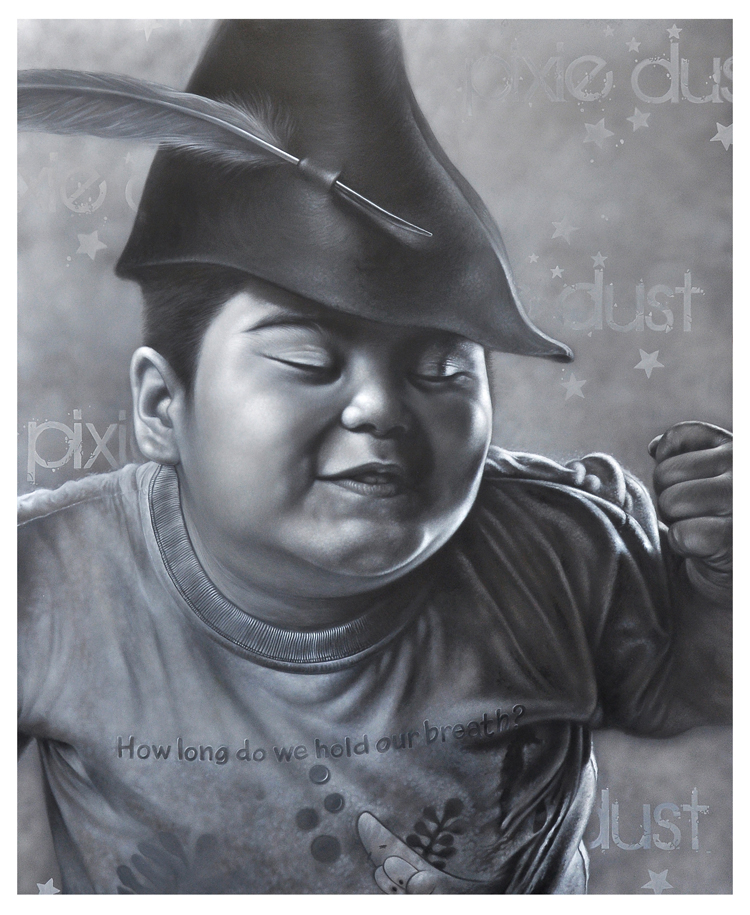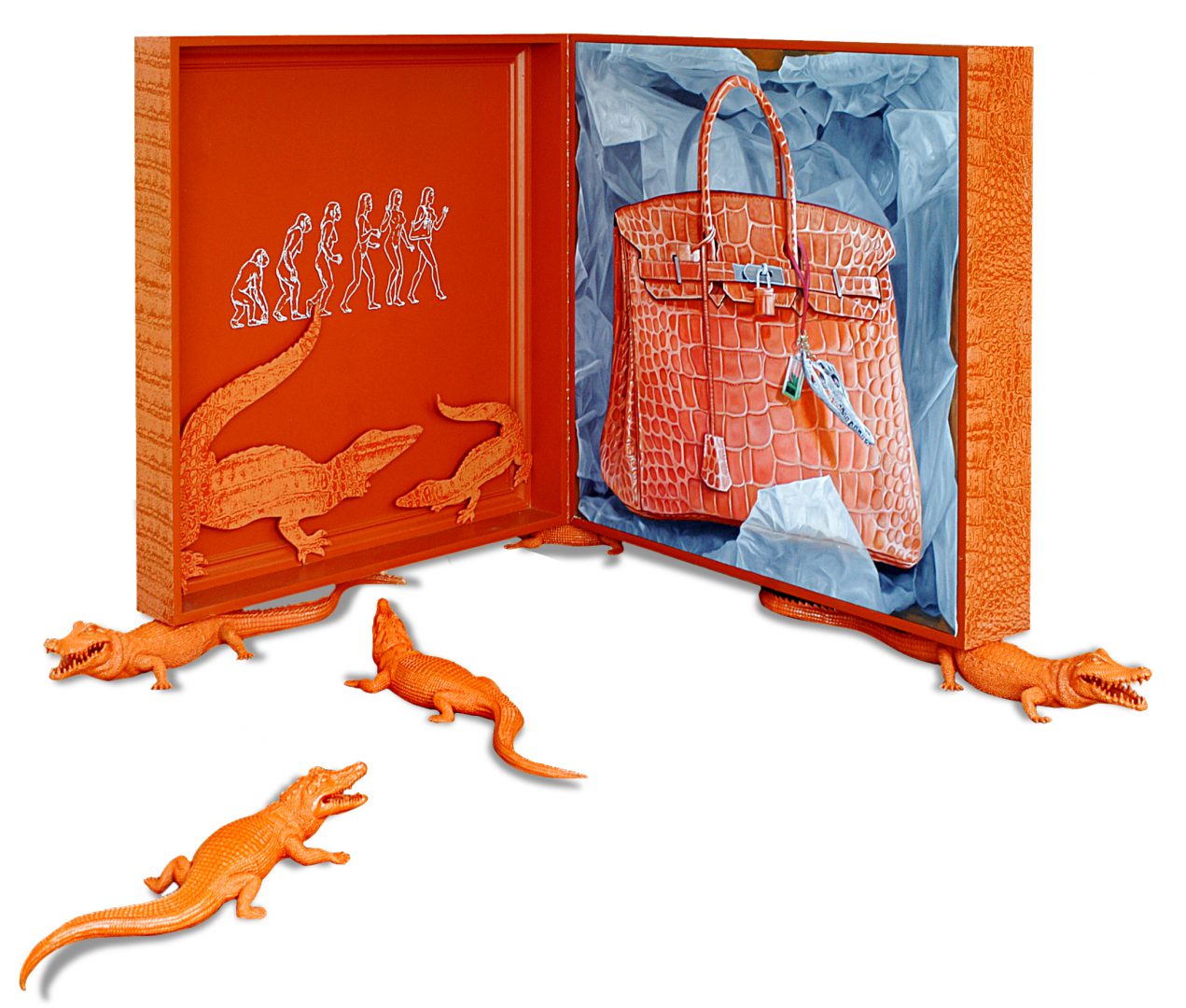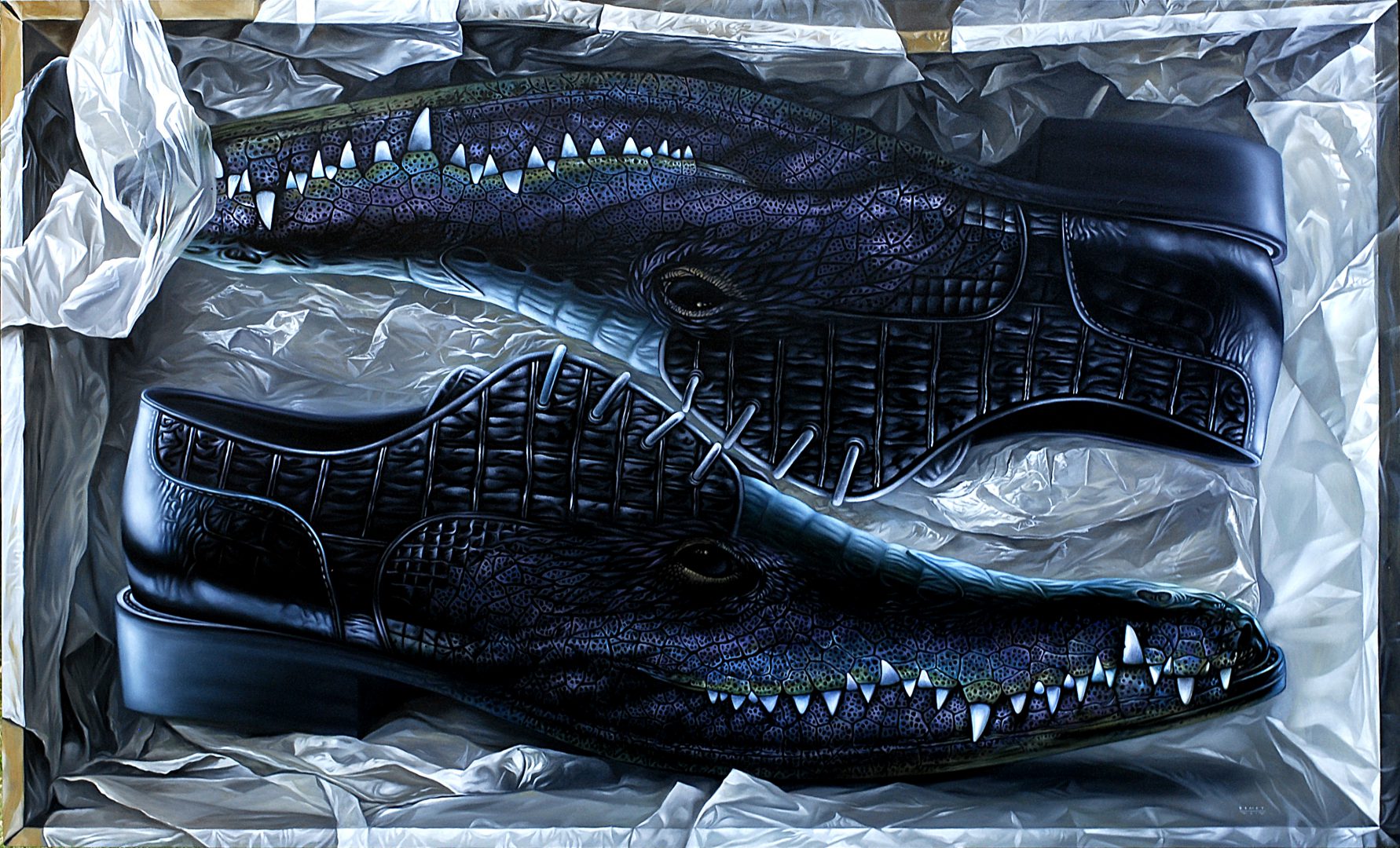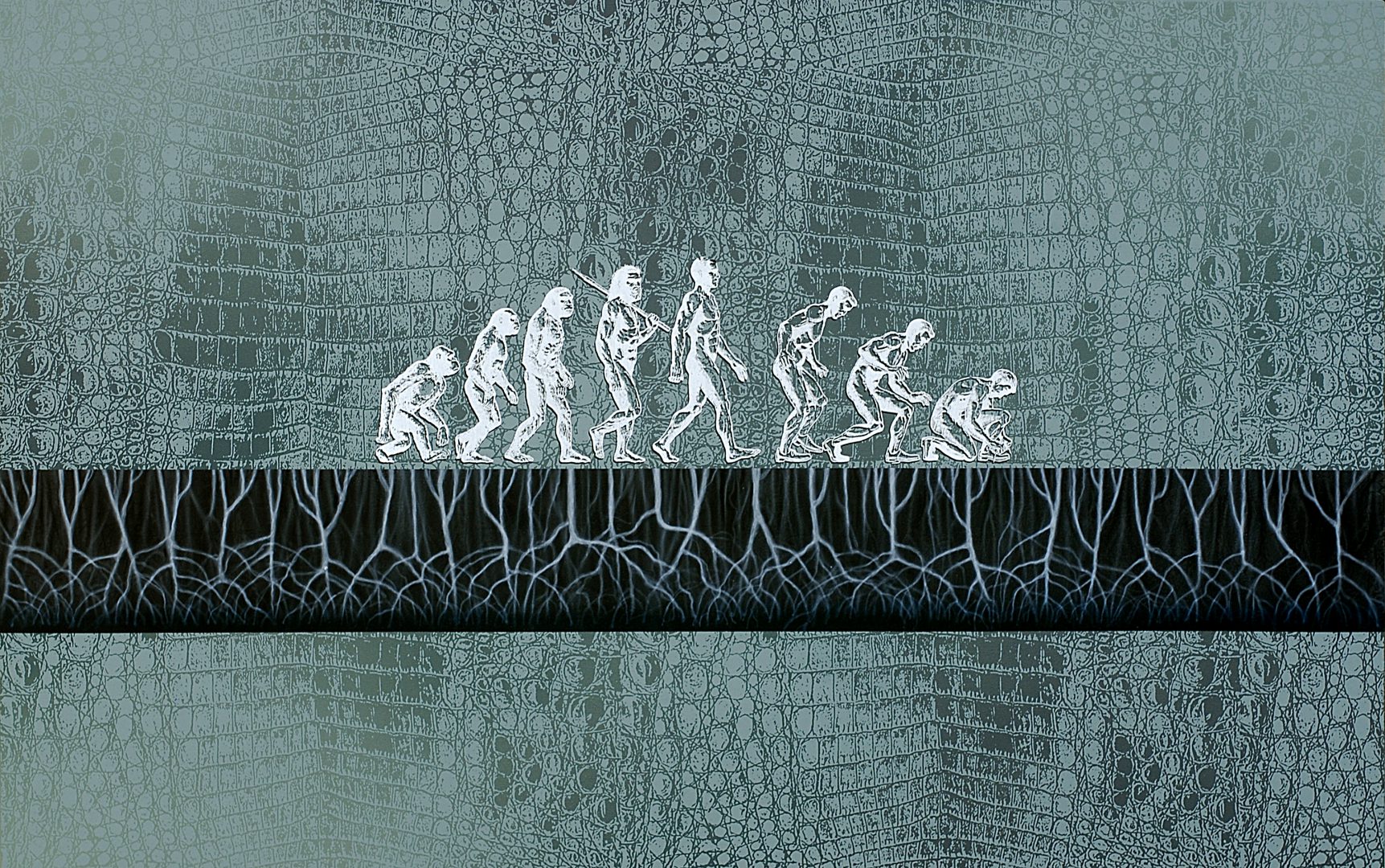THE NEW SALES PITCH IN LUXURY PRODUCTS
By Alice G. Guillermo
Demetrio de la Cruz ‘s new show at the Boston Gallery from May 19th once more dazzles the art scene with highly original works done in a multiplicity of media. The uncommon appeal of his art comes from the fact that he draws from the advertising idiom which he seamlessly integrates to create hybrid productions of painting and three-D. His present direction evolves towards a more enhanced use of multimedia and more startling three-d effects in combination with the basic painting ground which remains the backbone of his art with its unerring line and flawless anatomy.
Aside from the glowing images in oil on canvas, the strong appeal of his art also lies in his engagement with contemporary themes. For instance, the artist is quite aware that for some years now, the world of fashion has exploited a new wrinkle in woman’s vanity. This involves the use, indeed, the exploitation of the animal world for the expensive caprices of the female elite. This message is strikingly brought out in the artist’s latest work: “Lolong” and “Loleng” of recent fame have come to a grim end as the cut-out shiny uppers of a fashionable pair of men’s shoes. Though much effort seems to have been expended in the preservation of the Guinness-Book-of-Records original crocs for their prodigious size, still one can only guess at the large numbers of crocodiles that meet their bitter end in the many crocodile farms solely devoted to their conversion to luxury products that cater to consummate vanity. For instance, another unfortunate member of the species has become transformed into a lady’s bag in “Orange Croc” with the animal’s texture finely simulated by the artist’ s skilled hand.
A python, a species near extinction, also finds its way as the leather strap of a pricey man’s watch, its intricate mechanism in full view in “Watch Out” in a box that ironically bears the advertising image of an hour glass with a python gasping in its upper section as the fine sands trickle down. As to its message, it seems that the owner of such a timepiece is prodded to take a perverse pleasure in the capture and demise of such a rare, exotic creature that is sacrificed to announce his elite status.
In “Reflection”, the fragment of a safari with a panther fleeing under a twilight moon, is reflected in a hunter’s high-tech goggles ensconced in a case made of prize animal’s skin. Here, the grace and living energy of the wild creature will be ruthlessly cut down to make an idle accessory of men and women of fashion.
But another aspect is introduced by the artist for the first time: the image of the product is completed by its case or box in three-dimensional form. In the case of the shoebox for “Lolong and Loleng”, the cover portrays the familiar figures in silhouette of the rise and fall of man from ape to Homo Erectus. But this time, having reached the apex of evolution, man falls into a decline and returns back to his earthbound position, but this time wearing a pair of shoes! The same is true for “Orange Croc” in which the bag of crocodile skin is smartly enclosed in a box in leather of matching hue. The effect of this painstaking and meticulous process of encasing the luxury object initiates a play between two-dimensional and three-dimensional, while at the same time has the effect of underscoring the product snatched as it were from the bosom of nature and fashioned into a commodity reified in the market nexus. Likewise, the packaging brings luxury to a higher level, when the commodity itself bears the cachet of privilege, thus proclaiming the owner as a member of an exclusive club.
This is strikingly and movingly borne out in the magnificent work, “First Born” which draws from the Biblical story of Herod Antipas who orders all first-born to be killed in the bloody episode of the Massacre of Innocents despite the universal pleading to spare the children. The grieving, protesting crowd is rendered in gray while, in contrast, a mother cow and her suckling calf below are portrayed in rich brown tones. But they, too, are not spared the tyrant’s cruelty—the mother cow has now been fashioned into a bag complete with straps and handles, even when her likewise doomed calf nuzzles for her last drops of milk. The artist even has a sculptural version of the painting in “Gold Tag” in resin and polyurethane paint.
These examples only serve to prove the severe imbalance in the relationship between humans and the non-human creatures that surround us everywhere and give support to our lives. Contemporary theorists have recently deplored what they identify as the attitude of “specieism” which places man in an elevated position above all species and thus entitles him to exploit other creatures for his own sport and vanity. Such an attitude damages the balance of life in the universe and will ultimately redound to the destruction of all living things. Indeed, the root of all this is man’s greed for profit leading him to explore and exploit all possible materials that will serve man’s aggrandizement to the detriment of the life of nature around and within him. Such will create a condition in which humans become more and more alienated from the natural world.
Another victim of the insatiable drive for quick sales concerns the treasures of universal culture which have hitherto enhanced the meaning and enjoyment of life. These treasures in which the whole world partakes go back to earliest times, most of them from the classical period of ancient Greece and Rome. They, too, have become vulnerable to market forces as they have been symbols for a long time of underlying social values. Antique sculptures have become marshaled to serve as backdrops for the latest commodities of female vanity, as in “Backdrop 101” and “Backdrop 202”. “Backdrop 101”, a sculpture of two engrossed lovers rendered in marble, looms high in a shop cubicle but only to call attention to a fashionable bag of exotic texture derived from a species of spotted goat, the bare skull beside it attesting to its provenance, as well as a sculpture of a goat and its young at the top edge of the cubicle. The light bulb above lends a theatrical mise-en-scene with the effect of illusion. Thereby, the passion of the lovers is frittered away in the service of commodity.
In “Backdrop 202”, the sculptural figure is that of David in the act of hurling a stone at the giant Goliath. But the viewer’s attention is once again drawn to the bright red bag on the lower ledge of the cubicle alongside a skull, which this time is indeed a human skull. Above the cubicle is a cut-out of a cow and her calves arbitrarily stamped with the decorative logo of a fashionable designer brand. David’s heroic struggle against the dreaded Goliath has been diminished to a paltry gesture. But in this wanton sacrifice of animals, man himself is also a victim, as the death of living creatures is also his own.
Another riveting work is “100% Off” which is a familiar take on the advertisement pitch on so much percentage off the regular cost of the product. And, indeed, the female model of what seems to be fashion accessories is stripped bare, garnished only by skeletons of various animals. This likewise is a comment on the extraordinary load of erotica that is brought to bear on products for sale in our time, such that the “body beautiful” itself becomes a commodity disguised by a slew of vanity products.
The showcases of the great fashion houses, as well as the smaller establishments which follow their example in many parts of the world, only demonstrate the unrelenting pillage that the vanity market in the drive for profit subjects all living creatures and the natural environment-- this at the risk of disturbing the delicate balance of nature and alienating humans from the wellsprings of life and culture.
But the artist does not stop here: most of the products are ensconced in real boxes exquisitely fashioned to boost their commercial appeal.
This pillage of the animal world also extends to culture and the revered productions of the past: the Apollos become only a classy backdrop to bags and other passing vanities. Demetrio de la Cruz makes a strong point in these contemporary commercial trends, but does it with great charm and a fitting touch of satire.
BOSTON Gallery
19 - 30 May 2012
Address:
72-A Boston Street Cubao
Quezon City
Metro Manila
Philippines


